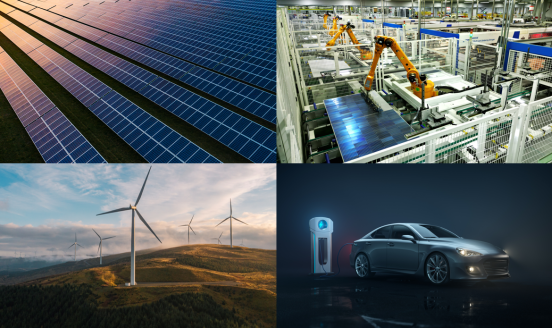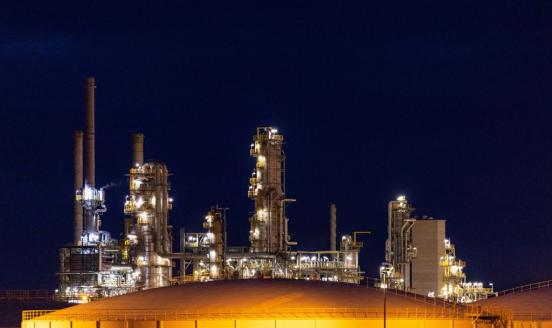Global decarbonisation: a wake-up call for the Middle East and North Africa
Many countries in the MENA region are heavily dependent on oil and gas for exports and taxes. But global decarbonisation could undermine revenues, eve
The ideas in this blog are explored in more detail in a working paper.
With half of the world’s known oil and gas reserves, the Middle East and North Africa (MENA) region is a cornerstone of the global energy system. But this system is currently undergoing a structural transformation that will challenge the MENA region’s central role. This shift is driven by two different but converging forces: decarbonisation policies and low-carbon technologies.
These changes could have huge implications for the world’s main oil and gas producing regions, such as MENA, whose macroeconomic features make them vulnerable to a shifting global energy market. These countries should starting planning now for a less carbon-dependant future.
At the moment, the economies of MENA oil and gas exporting countries (such as Algeria, Bahrain, Iraq, Kuwait, Libya, Oman, Qatar, Saudi Arabia and the United Arab Emirates) are still largely based on oil and gas industries, or government activities that are funded mainly with oil and gas revenues. In these countries, oil and gas are both the primary source of fiscal revenues and make up the predominant share of exports. Indeed, they make up more than 50 percent of total exports from MENA oil and gas exporting countries.
However, oil and gas dependence has wider macroeconomic implications for exporting countries. It also impacts areas such as employment and labour productivity. In oil and gas exporting countries such as Kuwait, Saudi Arabia and Qatar, more than 60% of domestic citizens are employed in the public sector. A high share of public employment, which is generally characterised by protected jobs with high wages, has lowered the labour productivity of MENA oil and gas exporting countries. This low level of labour productivity is one of the major barriers to economic diversification, as it hinders the emergence of internationally-competitive private businesses in other sectors.
Despite these worries, oil and gas exporters have had little incentive to change. Since the 1980s, global oil demand has constantly risen. Between 2000 and 2014 oil prices boomed. In such a favourable context, MENA oil and gas exporters were under little pressure to diversify their economies, and to evolve from resource rentiers to production states.
With global markets demanding increasing volumes of oil, at increasing prices – at least up to 2014 – why would MENA oil exporters change course and put at risk their established social contracts? After all, if oil production continues at current levels, MENA oil exporters still have a long way to go before depleting their reserves (Table 1). The model feels secure.
This favourable context has led MENA oil exporters to perpetuate their rentier economies, and to seek the creation of second order rents (real estate and financial speculation). The rise and growth of sovereign wealth funds in the region illustrates this well.
But the outlook for rentiers in the MENA region might not be as rosy as the current large reserves and strong prices imply. The fight against climate change and a desire for energy independence are both encouraging oil and gas importers to step up decarbonisation policies and push innovation in low-carbon technology. The resulting drop in global demand could leave MENA oil and gas reserves unneeded long before they are depleted.
This threat is particularly severe for oil reserves, whose exploitation is a major cause of pollution and climate change. For gas the situation is a little different. Gas is a “cleaner” fuel than oil and coal, and using gas to displace coal from the energy mix is a key part of many decarbonisation strategies. Therefore gas demand may hold up more strongly. Nevertheless, there is strong downward pressure on demand for both oil and gas, and MENA countries should plan for a shift in the global energy mix.
To understand the potential impact of such a scenario on MENA countries, it is useful to consider two scenarios developed by the International Energy Agency (IEA). If we assume no changes in current energy policies, the IEA expects global oil demand to increase over the next three decades. In the “450 Scenario”, which assumes a changed energy mix able to meet the Paris Agreement goal to limit global warming to 2°C, the IEA expects global oil demand to sharply fall after 2020.
In the first case, rising global demand would unsurprisingly lead to an increase in MENA oil exports. However, even in the second case, Middle Eastern oil exports are expected to remain stable at their 2020 level well into the 2040s. The IEA predicts stable MENA exports, even against a backdrop of falling global demand, because MENA oil is highly competitive on the global market. The industry is well established and the oil is relatively easy to extract. Therefore production costs are expected to remain lower than for other conventional and unconventional sources, such as arctic reserves or tar sands.
So, MENA oil exporters appear fairly resilient to any weakness in global demand provoked by decarbonisation – at least in terms of export volumes. But revenues depend on both volumes and prices. Thus it is also necessary to look at projections for oil prices, and here we see that decarbonisation would be a real threat to MENA countries. Even if Middle Eastern oil export volumes remained stable over the next three decades, the IEA predicts that revenues would decline by 2040 because of the lower oil prices expected in the 450 Scenario (Figure 1).
Such a development would be an unprecedented challenge for MENA oil exporters, whose economies are built on steadily increasing oil revenues. Indeed, their entire social and political model would need to change in order to adapt to the new reality. This shift would also come at a time of rapidly increasing populations: a trend that would put additional pressure on governments and make the transition from rentier to production economies even more complex.
The drop in oil prices that started in 2014 has already been a catalyst for new thinking throughout the MENA oil exporters. There is growing awareness of the fact that their high reliance on oil is economically unsustainable, and the consequent need for economic diversification. All regional oil exporters have adopted economic diversification strategies, generally with the aim to increase the private sector’s role in the economy, develop small and medium enterprises (SMEs), and invest in education and innovation.
This policy shift is to be welcomed, and these strategies reflect the guidance generally directed to MENA oil exporters by experts and international organisations (such as the IMF, the OECD and the World Bank). However, it should be remembered that these kinds of economic diversification plans have been part of MENA oil exporters’ rhetoric for a long time. For instance, Kuwait’s government was already discussing the need for economic diversification during the 1950s. After 60 years, oil continues to represent more than 60 percent of Kuwait’s GDP, and more than 70 percent of its fiscal revenues.
And we have been here before. MENA oil exporters have often set out similar strategies in times of low oil prices, and then rapidly dismissed them once prices recovered. MENA rentier states easily give up their well-argued and planned policies when under pressure, falling back on established ways of doing business – namely through patronage and a huge public sector. There is, therefore, a risk that current strategies could be quickly forgotten if/when oil prices recover from the current low levels.
But this time might be different. Climate change is a fact, and decarbonisation policies and low-carbon technologies are driving a global energy transformation that could permanently reshape the established energy system. MENA oil exporters should accept economic diversification strategies as a necessary structural path. They must follow this path without deviation in order to ensure both political stability and socio-economic prosperity – even in a decarbonising world.
Today, MENA oil exporters are still over-reliant on the oil rent. They are not yet equipped to sustain themselves – let alone to grow and develop – in a rapidly decarbonising world. If the world sticks to the promises made in Paris, and aggressively decarbonises the global economy, MENA oil exporters risk being caught unprepared. The consequences could be dramatic for the economies and societies of the MENA region, with worrying geopolitical risks for the rest of the world as well.



